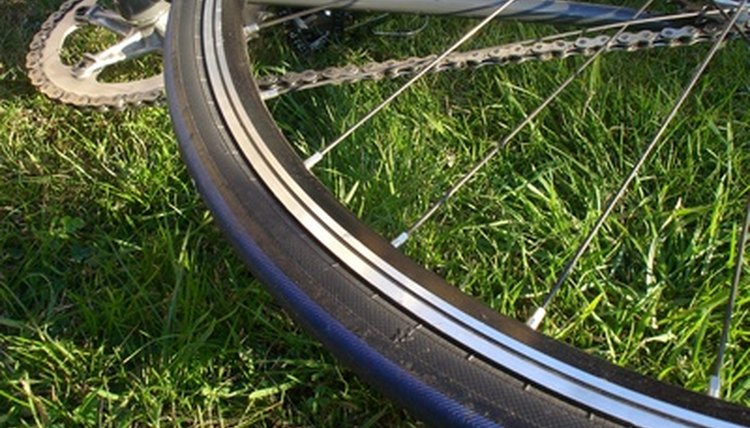How to Adjust a Shimano 105 Front Derailleur

On a bicycle, the front derailleur moves your chain between higher and lower gears. A poorly adjusted derailleur can cause your chain to rub and gears to shift and drop unexpectedly. You can avoid these problems, especially on a steep climb or during other conditions in which a perfectly tuned derailleur is desirable, by setting limit screws, adjusting your front derailleur and adjusting cable tension.
Derailleur Adjustment
Set the limit screws with a Phillips head screwdriver so that the derailleur does not shift or move the chain off the chain rings.
Shift so that your chain is in the lowest gear, which is the smallest chain ring in the front and largest in the back.
Set the L-limit screw (the one closest to your frame) with a Phillips head screwdriver so the derailleur cage closest to your bike is about 2 mm away from the smallest chain ring.
Shift to the highest gear, with the largest chain ring in the front and smallest in the back.
Set the H-limit screw so that the derailleur cage plate farthest from your frame is about 2 mm away from the largest chain ring.
Pull with your finger or a pair of pliers the derailleur's cable away from the bike to eliminate slack, then tighten the cable bolt (located on the cable pinch bolt above the front derailleur) with the 5 mm Allen key.
Shift between your two or three (depending on derailleur) chain rings. If your chain does not easily shift or if it rubs, fine-tune the derailleur by increasing the tension with a shifter cable adjustment.
Shifter Cable Adjustment
Shift to largest sprocket in both the front and the back.
Turn the cable adjustment bolt (located on the cable leading to the front derailleur) counter clockwise about three turns.
Shift the bike through all gears, high and low. If the chain does not transfer smoothly, continue to turn the cable adjustment bolt until it does.
References
- "Bike Repair and Maintenance for Dummies"; Dennis Bailey; 2009
- BicycleTutor: How to Adjust Your Front Derailleur
Writer Bio
Nicole Greenman has been freelance writing since 2008. Her articles have appeared on online for DavisVoice and for a dentist's website in Los Angeles. Greenman graduated from the University of California-Davis with a Bachelor of Arts in sociology and a minor in American studies.
